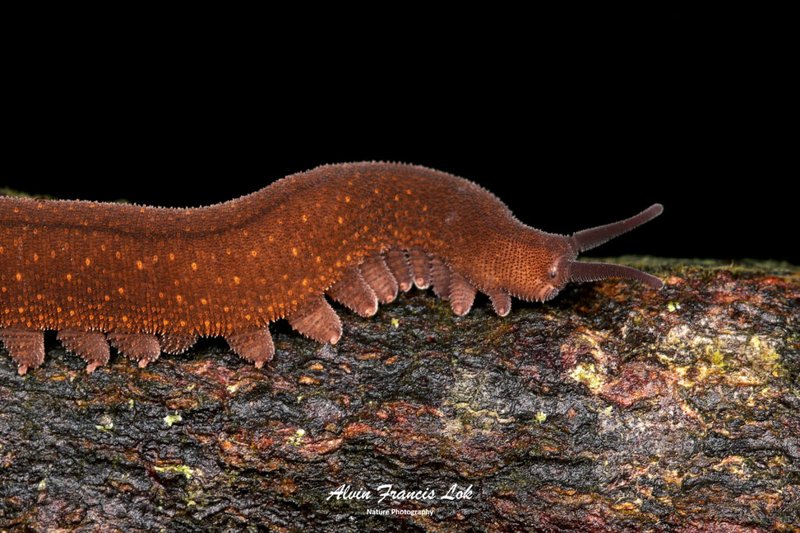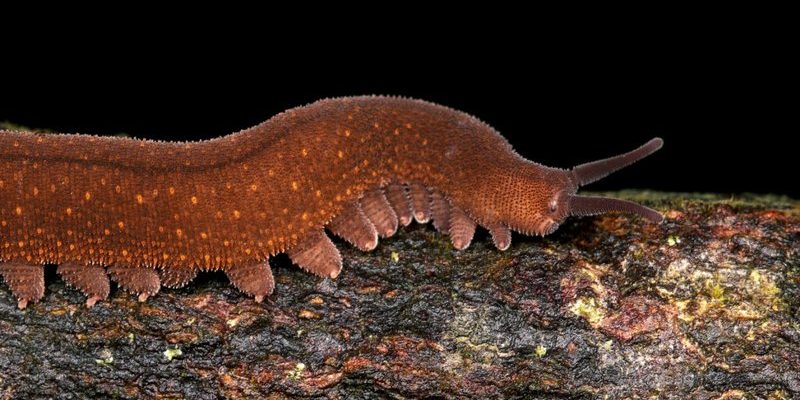
Imagine walking through a lush forest, surrounded by trees, flowers, and a multitude of insects. Now, picture a velvet worm quietly creeping along the forest floor, blending into the damp earth, and glistening under the sunlight. They might seem insignificant, but they hold a lot of weight in the web of life. By understanding their importance, we can appreciate not just velvet worms but the intricate tapestry of life on Earth.
What Are Velvet Worms?
Velvet worms, called *Onychophora*, are unique invertebrates that have been around for millions of years. They resemble a mix between a caterpillar and a slug, with soft, velvety bodies and a series of stubby legs. You might spot them in tropical rainforests or damp environments, often hidden under leaves or logs.
These creatures are nocturnal hunters, using their slime glands to capture prey, like insects. Imagine a tiny superhero, shooting out sticky threads to trap its dinner! This remarkable adaptation not only helps them survive but also manages insect populations, contributing to the balance of their ecosystems.
The Role of Velvet Worms in Ecosystems
The role of velvet worms in ecosystems is more essential than you might think. First off, they are vital as predators. By feeding on insects, they help to control these populations, preventing any single species from overrunning an area. This natural pest control is crucial for plant health and the overall stability of the ecosystem.
Moreover, as velvet worms move through the soil and leaf litter, they assist in nutrient cycling. Their physical movements help aerate the soil and break down organic matter, which enriches the ground and supports plant growth. Healthy plants, in turn, provide food and shelter for countless other organisms. Talk about a domino effect!
Biodiversity and Its Importance
Biodiversity refers to the variety of life on our planet, encompassing all living organisms, ecosystems, and genetic diversity. Think of it as a beautiful quilt, where every square is unique but essential to the overall pattern. Biodiversity is what keeps ecosystems thriving, resilient, and adapting to changes, whether it’s climate shifts or human impacts.
Without biodiversity, ecosystems can collapse. This collapse can lead to food shortages, loss of clean water, and even increased diseases. So, when we talk about velvet worms, we’re not just discussing some obscure species; we’re talking about a critical thread in the fabric of life. The more diverse our ecosystems are, the better they can withstand challenges and provide us with essential services.
Why Velvet Worms Are Indicators of Environmental Health
You might be wondering, “What does a little worm have to do with environmental health?” Well, velvet worms are sensitive to changes in their environment, making them excellent bioindicators. These gentle creatures thrive in clean, moist habitats—if their population dwindles, it often signals that the ecosystem is under stress.
Monitoring velvet worm populations gives scientists valuable insights into the health of an ecosystem. They can assess factors like pollution, habitat destruction, and climate change impacts. In this way, preserving velvet worms can help us keep a finger on the pulse of environmental health.
Threats Facing Velvet Worms and Their Habitats
Despite their importance, velvet worms face numerous threats. Habitat loss due to deforestation, urbanization, and agricultural expansion puts immense pressure on their populations. You might think of a forest as a vast, stable place, but in reality, these creatures depend on specific microhabitats that can easily be disturbed.
Additionally, climate change poses a significant risk. As temperatures rise and weather patterns shift, the humid environments these worms thrive in could become too warm or dry. Losing even one species can ripple through the ecosystem, affecting everything from soil health to animal interactions.
Conservation Efforts and What You Can Do
Conservation efforts for velvet worms often focus on habitat preservation and restoration. Creating and maintaining protected areas can ensure these unique creatures have safe spaces to thrive. Supporting organizations that work to conserve biodiversity is a great place to start.
You can also help by spreading awareness. Share what you’ve learned about velvet worms and biodiversity with friends and family. Every small action counts—creating a ripple effect of awareness about these incredible creatures can inspire others to care as well.
Lastly, consider making eco-friendly choices in your daily life. Whether it’s reducing plastic use or supporting sustainable agriculture, every little bit helps protect the delicate balance of our ecosystems.
The Bigger Picture: Connecting Velvet Worms to Human Well-Being
Let’s zoom out for a moment. While we’ve focused on velvet worms, their significance connects directly to our well-being. Healthy ecosystems provide us with clean air, water, food, and even medicine. Biodiversity is essential for agriculture, contributing to food security and resilience against pests and diseases.
By protecting velvet worms and their habitats, we’re not just saving a quirky species; we’re safeguarding our planet’s future. It’s a reminder that every creature, no matter how small, plays a crucial role in our shared ecosystem.
In conclusion, velvet worms are unsung heroes of biodiversity. Their role as predators, indicators of environmental health, and participants in nutrient cycling highlights their importance. When we embrace the value of all species, we take a step toward a healthier planet for ourselves and future generations. So next time you’re out in nature, remember the tiny velvet worm and all that it does for our world.

